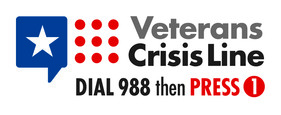
(Photo: senivpetro)
A recent study by the RAND Epstein Family Veterans Policy Research Institute has uncovered significant gaps and inefficiencies in federal programs intended to assist Service Members transitioning to civilian life.
Challenges Faced by Transitioning Service Members
Transitioning from military service to civilian life presents numerous challenges for Service Members, including finding employment and determining a new place of residence. This period often requires support for job searching and leveraging the skills developed during military service. It can also be an opportunity for some Veterans to pursue further education or training. Spouses of Service Members, who may have paused their careers due to military commitments, also benefit from such employment support.
To address these needs, the federal government invests over $13 billion annually in transition programs. However, the RAND study uncovers a lack of detailed information on how these programs allocate their budgets and their effectiveness in helping Veterans secure stable civilian employment. This lack of transparency is concerning given the significant financial resources involved.
Federal Programs
The study examined 45 programs identified by the U.S. Government Accountability Office that provide employment support to Service Members, Veterans, and their dependents. The research sought to determine which programs receive disproportionate funding relative to their participation rates, identify gaps in evaluation research, and reveal opportunities to improve the efficiency of federal investments.
In 2019 and 2020, the GAO cataloged 45 such programs across 11 federal agencies. The study categorized the programs into four tiers based on their budgets and target populations. The “Big Four” programs, including PGIB, VR&E, the Department of Defense’s Tuition Assistance Program, and Survivors’ and Dependents’ Educational Assistance, account for the majority of federal spending.
Key Findings
Emphasis on Education Over Employment
The study found that most federal funding for transition programs is directed towards education rather than directly helping Veterans translate military skills into civilian employment or secure apprenticeships and jobs. This focus on education over employment support may not be the most efficient use of resources. For instance, in fiscal year 2019, the Big Four programs received $13.5 billion out of a total $14.3 billion, while TAP, which serves all transitioning Service Members, received only $140 million.
Limited Evidence of Program Effectiveness
There is scant evidence supporting the effectiveness of these programs. For example, TAP is associated with lower wages for participants, and many programs lack data on outcomes, evaluation plans, or performance measures.
Need for Better Oversight and Budgetary Scrutiny
The study uncovered outdated and conflicting information across programs, even for significant ones like VR&E. The study found that the largest program, the Post-9/11 GI Bill, provides minimal information on participation and outcomes, such as graduation rates. This lack of transparency extends across all 45 programs examined, indicating a need for more oversight. Policymakers should mandate standardized budget and performance reporting to improve oversight and effectiveness.
Recommendations for Improvement
The RAND study offers several recommendations to improve the effectiveness and efficiency of military-to-civilian transition programs:
Conduct Independent Evaluations
The government should commission independent evaluations of the largest programs to address inefficiencies and improve performance. This would provide insights into the actual benefits of these programs.
Refocus on Employment Support
Shifting the focus from education to employment can better assist Service Members and Veterans in finding civilian jobs that match their skills. Personalized support programs and outsourcing career counseling to local private-sector professionals are potential strategies.
Standardize Budget Reporting
Consistent and routine budget reporting for all transition programs is essential. Policymakers should enforce this to ensure accurate and up-to-date information.
Address Redundancies
Reducing redundancies by consolidating similar programs can enhance outreach, reduce overhead costs, and improve the overall efficiency of the support landscape.
Path Forward
The RAND study identifies issues in the current federal programs designed to assist military-to-civilian employment transitions. With improved oversight, a greater focus on employment support, and streamlined program structures, the federal government can more effectively aid Veterans and their families in successfully reintegrating into civilian life. According to the RAND study, policymakers should consider these recommendations to optimize the impact of these important support programs.












